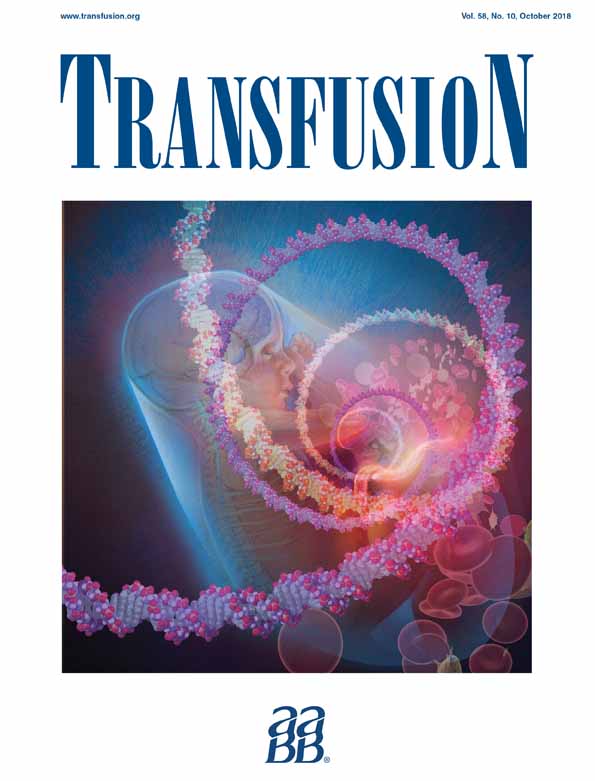In vivo viability of extended 4°C-stored autologous apheresis platelets
Abstract
BACKGROUND
The current 5-day storage time of room temperature (22°C)-stored platelets (RSPs) severely limits platelet (PLT) availability. Extended cold (4°C)-stored PLTs (CSPs) are currently being investigated for actively bleeding patients. However, we currently do not know how to best store PLTs in the cold for extended periods of time. In this study, we investigate how storage in plasma and PLT additive solutions (PASs) affects PLT viability in vivo.
STUDY DESIGN AND METHODS
Twenty normal subjects had a 2-unit hyperconcentrated apheresis PLT collection. One unit was stored at 4°C in plasma for 3 days (“control unit”), and the CSP “test” unit was stored for 10 or 15 days in plasma or 10 days in 35% plasma with either 65% Intersol or Isoplate. After storage, all units were radiolabeled and transfused into their donors.
RESULTS
For 10-day storage, both the plasma and the Intersol units had significantly better PLT recoveries than the Isoplate units (24% ± 8% vs. 11% ± 3% [55% ± 11% vs. 21% ± 8% as percentage of control data], p = 0.002; and 18% ± 4% vs. 11% ± 3% [43% ± 6% vs. 21% ± 8% as percentage of control data], p = 0.004, respectively). There was a trend for lower PLT recoveries with Intersol compared to plasma (p = 0.056). PLT survivals and most in vitro measurements did not differ significantly among the units.
CONCLUSIONS
While the in vitro variables suggest largely comparable results between plasma and PASs, in vivo recoveries were higher with plasma compared with both Intersol and Isoplate (p = 0.057 and p = 0.002, respectively). Whether this difference leads to clinically relevant differences in hemostatic efficacy remains to be determined.
CONFLICT OF INTEREST
The authors have disclosed no conflicts of interest.




